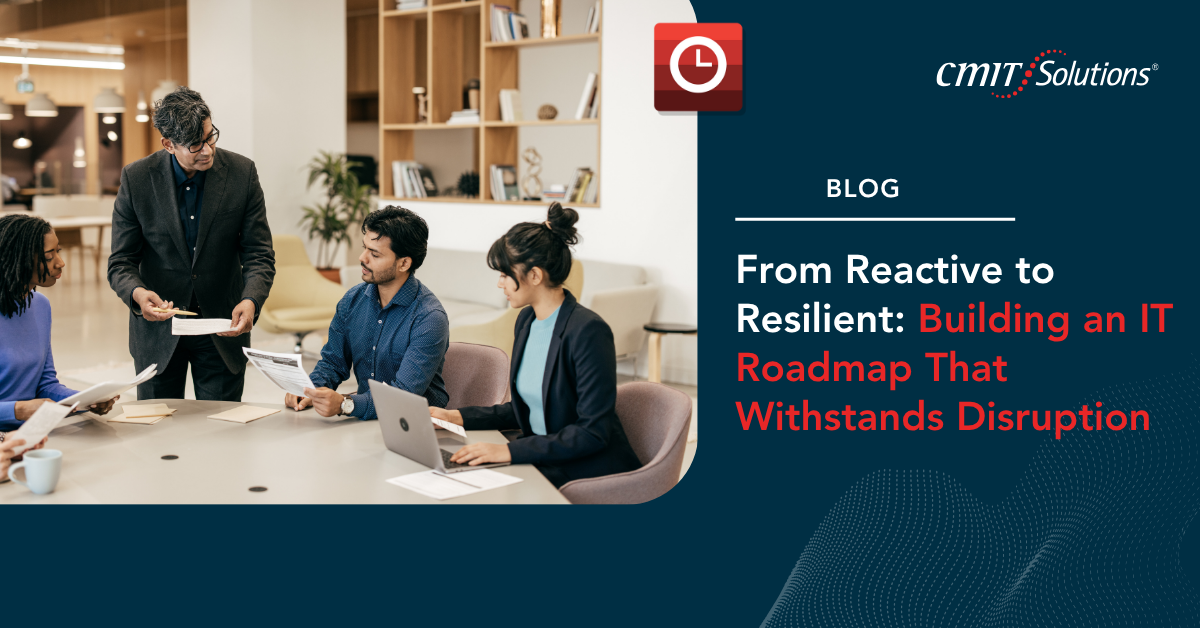Introduction: The Shift from Reaction to Resilience
In an era marked by constant technological change, cybersecurity threats, and global disruptions, businesses can no longer afford to operate in a reactive IT mode. Downtime, data breaches, and outdated systems aren’t just inconvenient—they’re business risks that can halt operations and damage reputations. To thrive today and into the future, companies must embrace resilience as a foundational principle.
An effective IT roadmap is more than a technology checklist; it’s a living strategy that integrates innovation, security, scalability, and business continuity. In this guide, we’ll unpack how businesses in Bothell and beyond can design resilient IT environments that adapt, evolve, and withstand whatever challenges the future may bring.
-
Understanding the Business Impact of IT Disruptions
Reactive IT models often rely on break-fix approaches, where support is triggered only after issues arise. While this may save costs upfront, it results in unexpected outages, security lapses, and poor long-term planning.
Disruptions can take many forms: ransomware attacks, natural disasters, hardware failures, or compliance violations. Each carries financial consequences. For example, a cyberattack can paralyze operations for days, while HIPAA or PCI violations can incur significant penalties.
That’s why smart businesses are embracing a resilient mindset—one built on proactive planning, redundancy, and advanced monitoring. CMIT Solutions of Bothell and Renton helps companies overcome reactive habits by embedding proactive, resilient solutions.
-
The Building Blocks of a Resilient IT Roadmap
To transition from reactive to resilient, businesses must build their roadmap on solid pillars:
- Visibility: Real-time awareness of your entire infrastructure, applications, and endpoints.
- Redundancy: Backup systems, failover servers, and data recovery plans.
- Security: Layered defenses that evolve with the threat landscape.
- Adaptability: Infrastructure and tools that scale and pivot with business needs.
These pillars are supported by solutions like multi-layered security frameworks and scalable cloud services.
-
Strategic Risk Assessment and Gap Analysis
Resilience starts with identifying weaknesses before they become liabilities. An IT gap analysis evaluates the current state of systems and security against the ideal future state.
Questions to ask include:
- Where are we vulnerable to cyber threats?
- How fast can we recover from an outage?
- Are we compliant with industry regulations?
Explore how compliance impacts risk and how CMIT uses these insights to create tailored roadmaps.
-
Cybersecurity as a Non-Negotiable Core
Security is the foundation of resilience. With cyber threats becoming more sophisticated, businesses must go beyond firewalls and antivirus software.
Implementing advanced endpoint detection and response (EDR) tools, centralized SIEM platforms, and continuous vulnerability scanning is critical. Tools like Microsoft Sentinel SIEM provide intelligent analysis while EDR platforms enhance endpoint visibility and response.
-
Backup and Business Continuity Planning
Ransomware, accidental deletion, and server crashes are not a matter of if but when. Every resilient IT roadmap must include:
- Automated backups (daily, weekly, cloud-based)
- Disaster recovery planning with Recovery Time Objectives (RTOs) and Recovery Point Objectives (RPOs)
- Regular testing of recovery procedures
Learn how CMIT Solutions of Bothell and Renton enables backup and disaster recovery for uninterrupted operations.
-
Future-Proofing Through Scalable Cloud Solutions
Cloud infrastructure enables flexibility, mobility, and resilience. With the right configuration, businesses can:
- Scale resources up or down quickly
- Enable hybrid and remote teams
- Store data securely with geographic redundancy
Understand the benefits of scalable cloud and how it complements a resilient roadmap.
-
Unified Communications and Collaboration Tools
Resilience isn’t just about surviving disaster—it’s about ensuring consistent productivity. Unified Communication as a Service (UCaaS) platforms support seamless collaboration during disruptions.
Discover how CMIT helps hybrid teams stay connected and operational.
-
Monitoring, Management, and Automation
Resilient IT environments require constant visibility. Remote Monitoring and Management (RMM) tools detect anomalies before they become threats. Combined with automation, they streamline updates, patches, and alerts.
Explore how Microsoft Intune powers secure, automated device management and monitoring.
-
Employee Training and Digital Experience Optimization
Resilience is human too. Your team must be prepared to detect phishing, manage devices securely, and navigate system changes with ease. Regular training builds a culture of digital awareness.
Pair this with Digital Employee Experience (DEX) tools to ensure systems enhance rather than hinder performance. Optimize your digital employee experience to boost resilience from the inside out.
-
AI, Automation, and Emerging Technologies
AI isn’t just hype—it’s a resilience tool. Automated threat detection, intelligent forecasting, and smart workflows can prevent problems before they arise.
Learn what’s on the AI horizon and how it plays into your IT roadmap strategy.
Conclusion: Resilience Is the New Competitive Advantage
Disruptions aren’t optional—but chaos is. With a resilient IT roadmap, businesses move from scrambling to strategic. They protect what matters, empower teams, and unlock growth even in the face of adversity.
CMIT Solutions of Bothell and Renton partners with forward-thinking companies to build IT environments that evolve with your business—not against it. From compliance and cloud to disaster recovery and AI, their managed services drive long-term resilience across every layer of IT.






